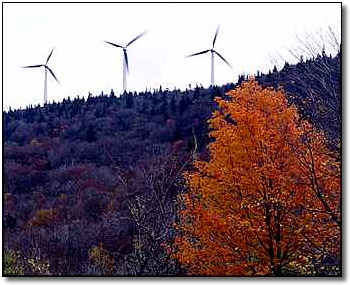That level is capped at 10 percent of total sales. It also incorporates an
incentive for energy efficiency programs to curtail load growth.
Under the new law, in 2012, the Public Service Board (PSB) will review the
situation. If the goal is not met, the percentage of new load growth will
become a mandatory standard. For instance, if the state experiences a 5%
load growth, but utilities are not obtaining 5% of their electricity from
eligible renewables by the cut-off date, a 5% RPS will come into effect.
This is a rather unique approach with that of the other 18 states that
have a similar RPS laws, according to the American Wind Energy Association
(AWEA). While the ultimate goal with these laws is to help bolster, and
often mandate, renewable energy projects, most states have a specific
legislative approach.
In Vermont, the new law defines "renewable energy" as "energy produced
using a technology that relies on a resource that is being consumed at a
harvest rate at or below its natural regeneration rate." Small hydropower
(up to 200 MW) and methane from landfill gas, anaerobic digesters, and
sewage-treatment facilities are included. Large hydro and municipal solid
waste is excluded.
If the mandatory RPS goes into effect in 2013, utilities will be able to
meet its requirements by constructing or contracting for renewable energy
resources, by purchasing new renewable-energy credits, or by a combination
of both. Utilities may also opt to pay into a fund that will support the
development of renewable energy and energy efficiency.
The law also contains a provision to make it easier to connect new
projects to the system. That provision requires utilities to contract to
take power from any new renewable energy facility built in the state, as
long as electricity from the project does not exceed the market price.
"This is a good step forward for Vermont to join the ranks of states with
renewables portfolio standards," said Andy Perchlik of Renewable Energy
Vermont. "It sends the message that renewables are valuable additions to
the Vermont electricity portfolio."
Counting large hydropower facilities, the state already obtains over 50%
of its power from renewable energy facilities.
One controversial provision is that - since the mandatory RPS does not go
into effect until 2013, if ever - utilities that add new renewable
projects can sell the renewable energy credits into the compliance markets
to meet renewable portfolio standards in neighboring states or into the
voluntary green power market.
The Vermont Public Service Board (PSB) is working on developing
regulations to implement the new law by September 2006.
Information courtesy of the American Wind Energy Association (AWEA)
